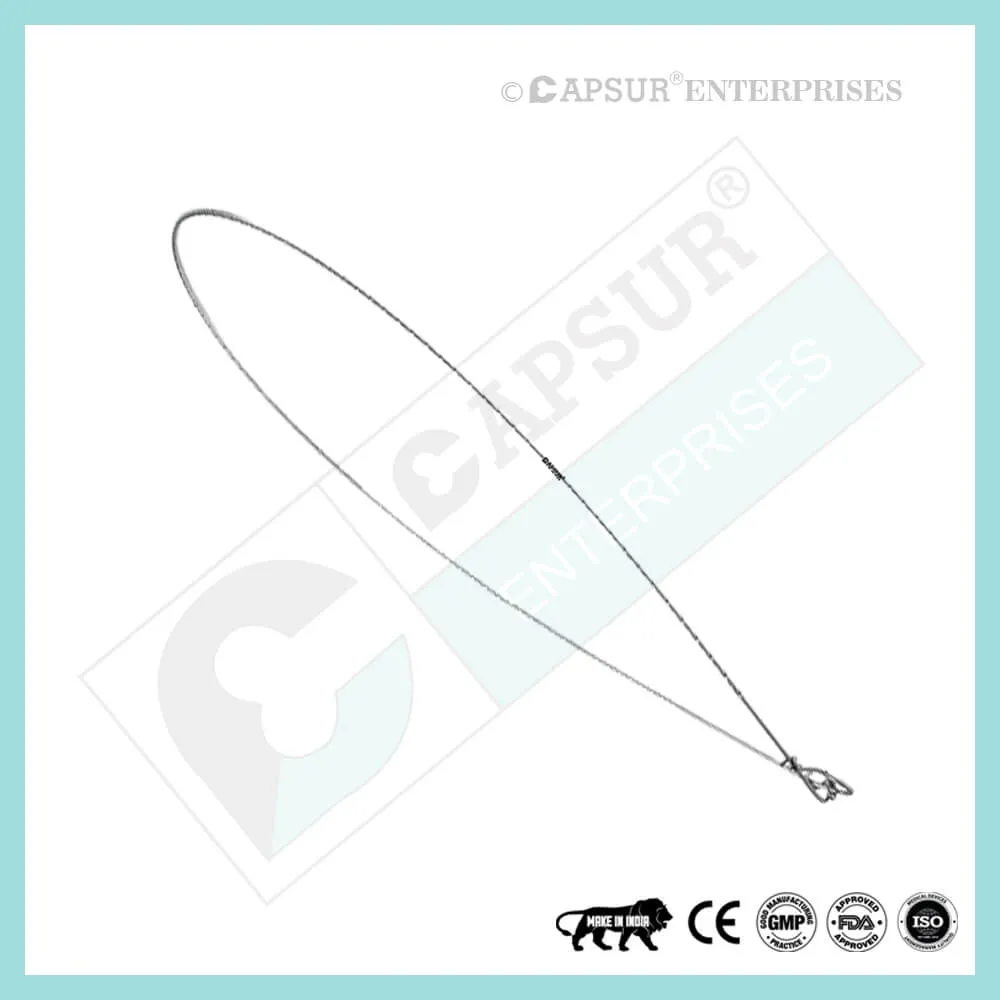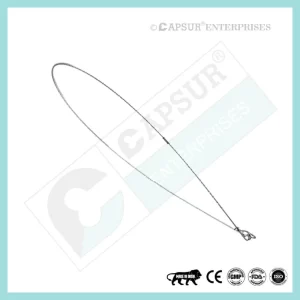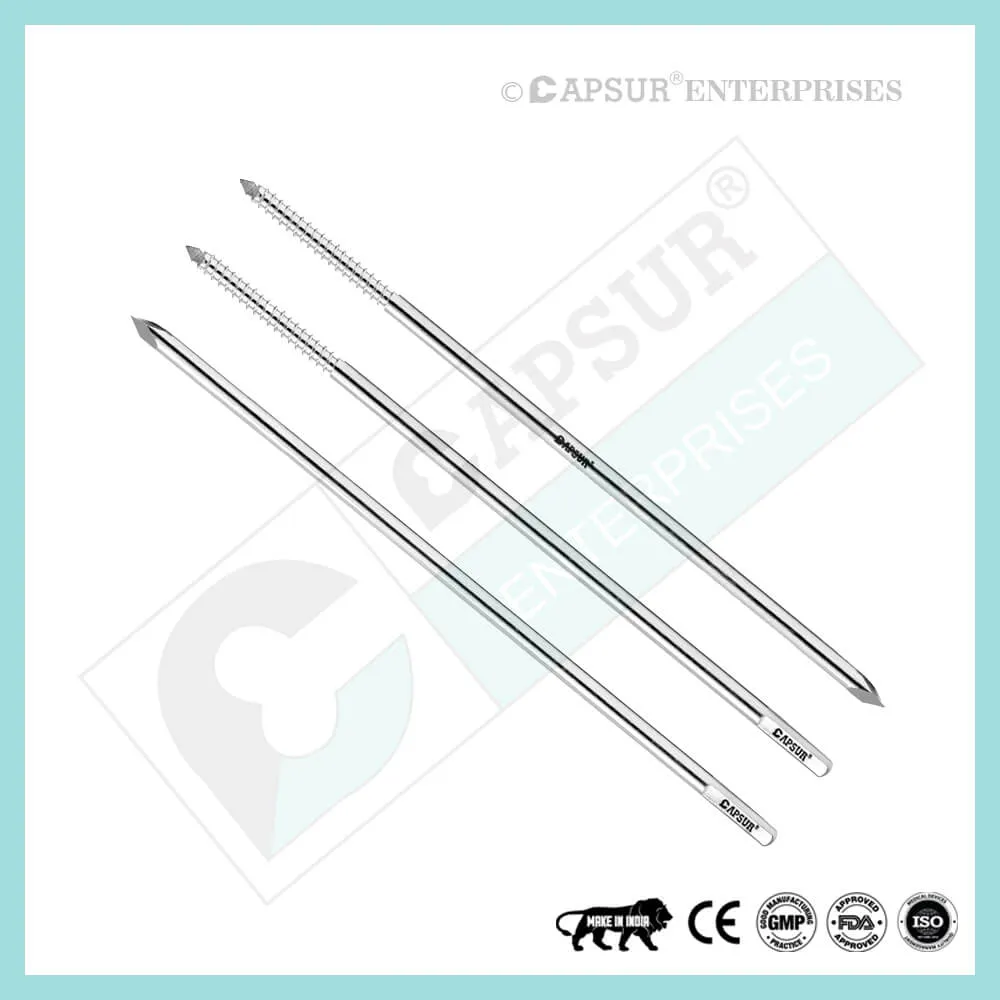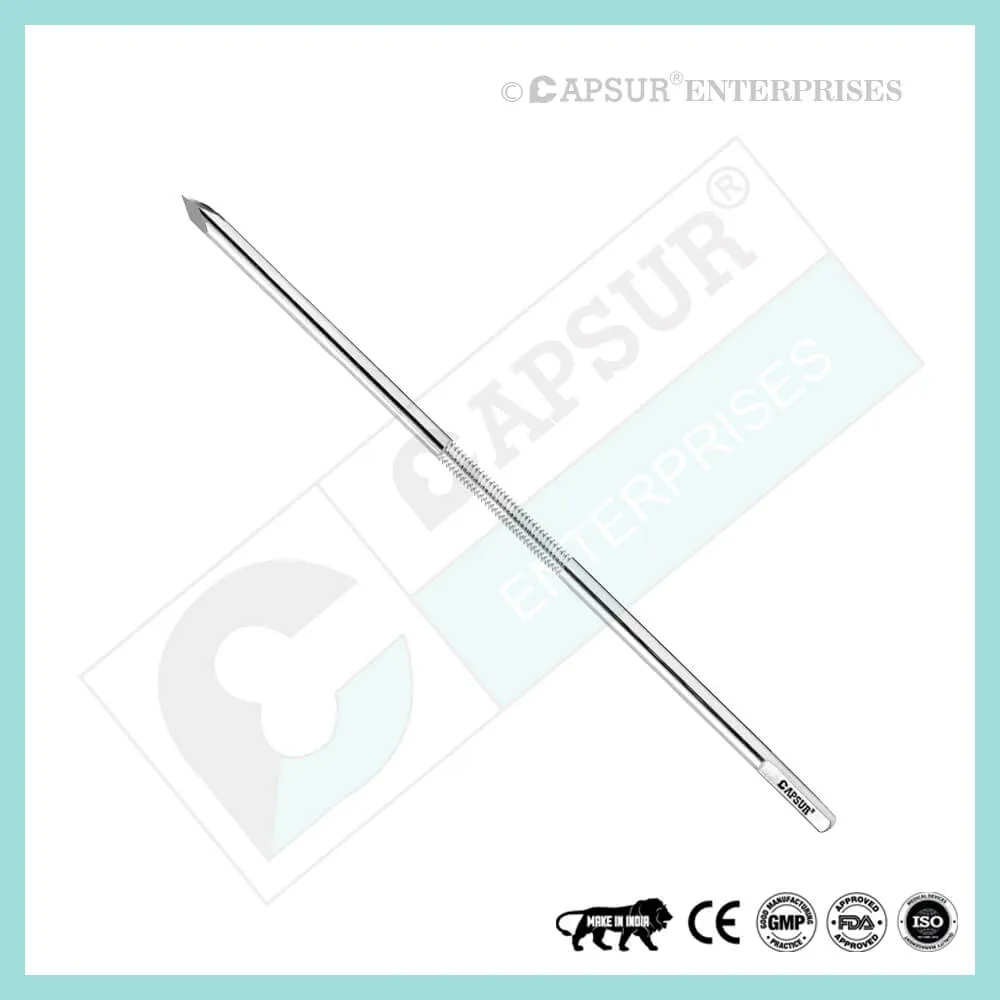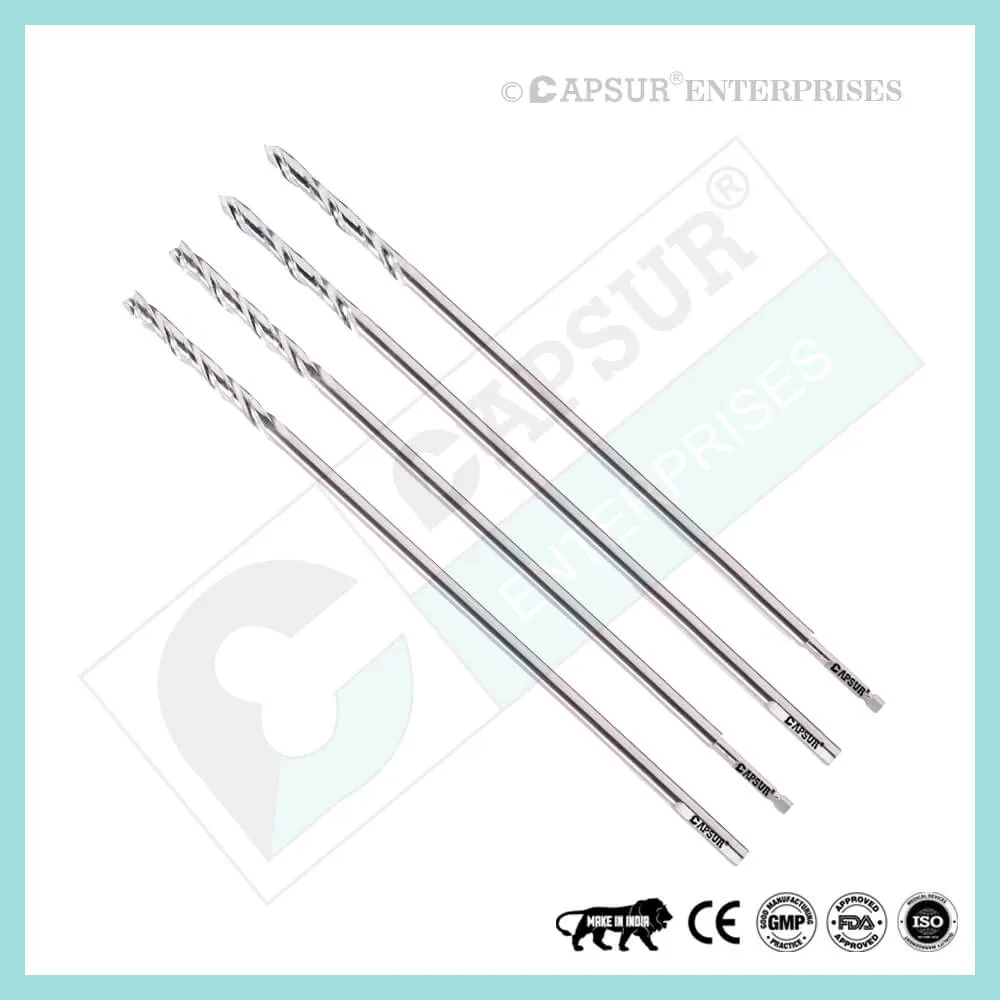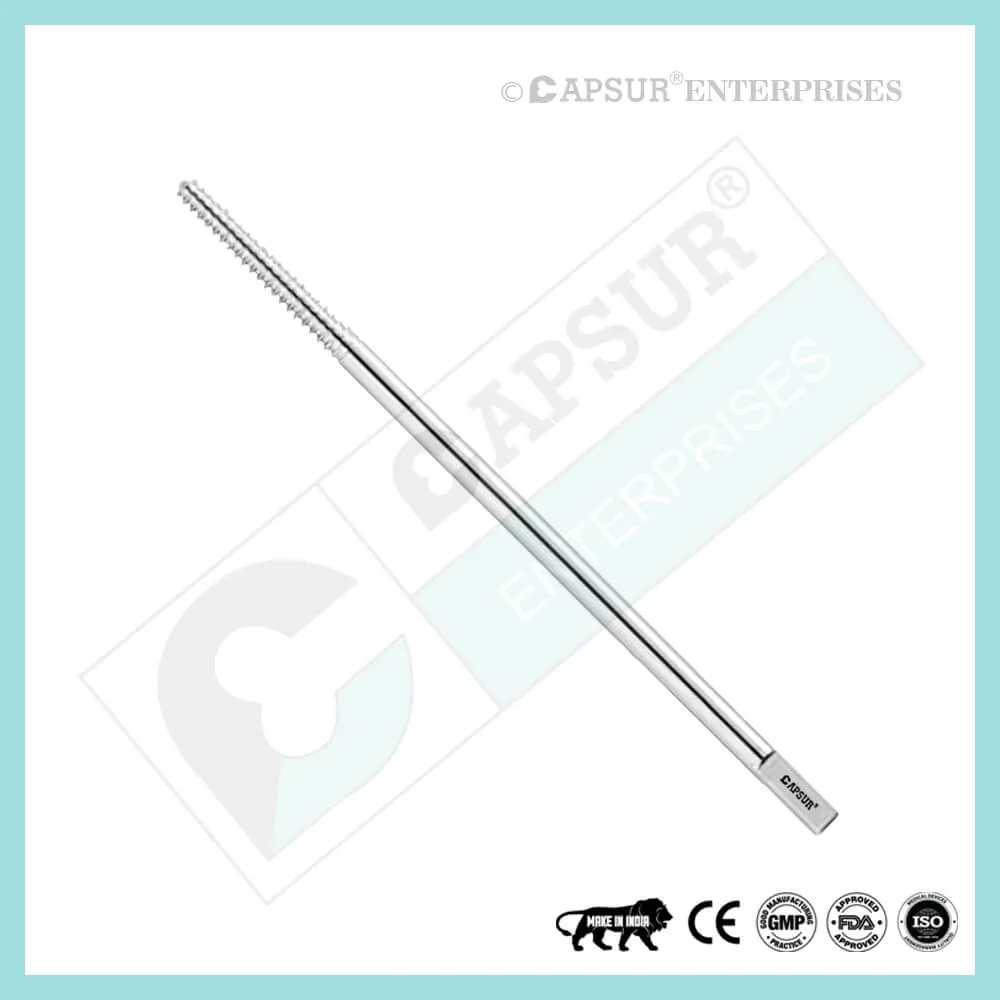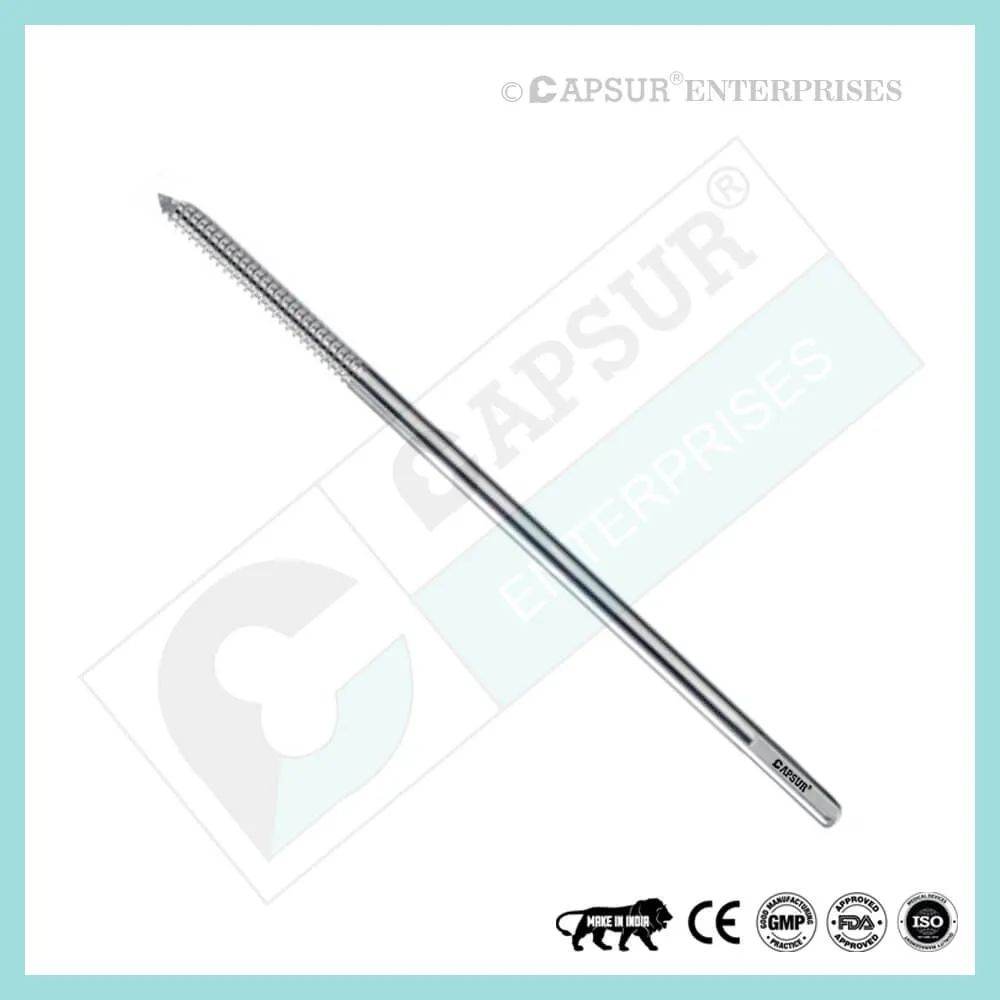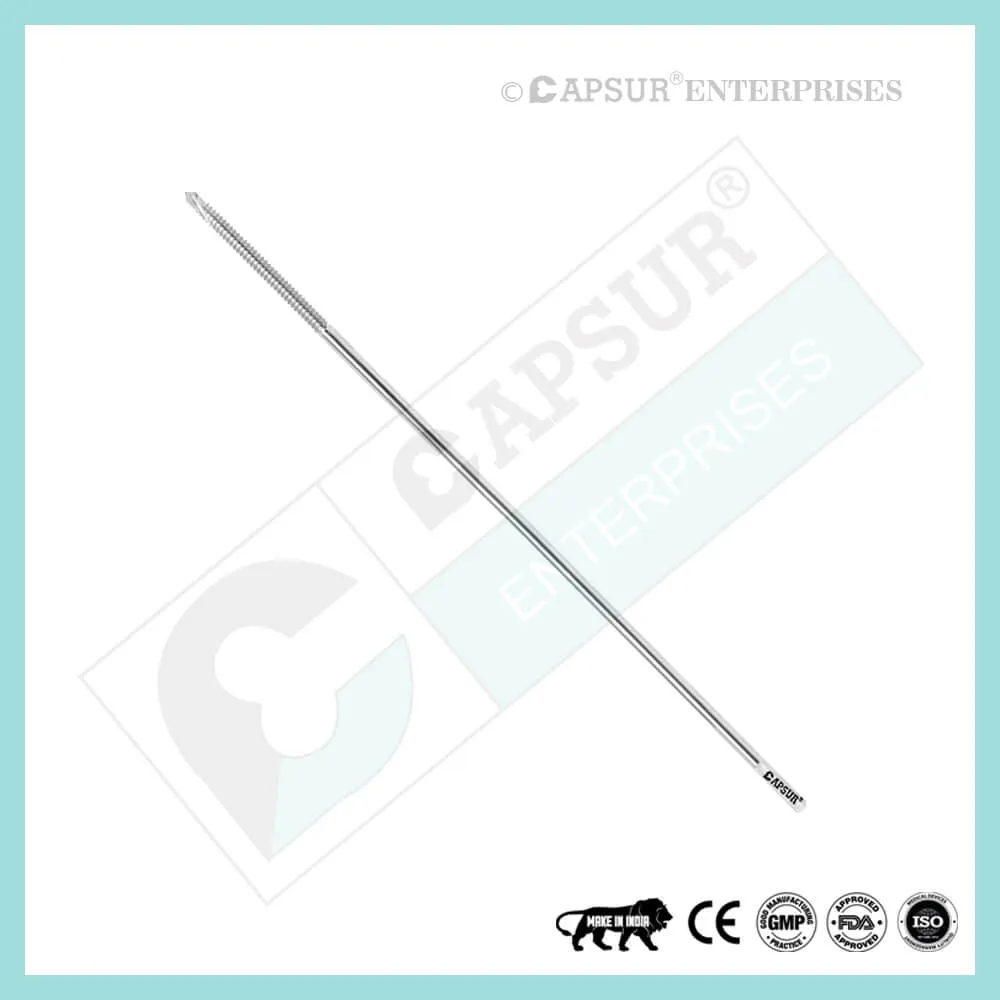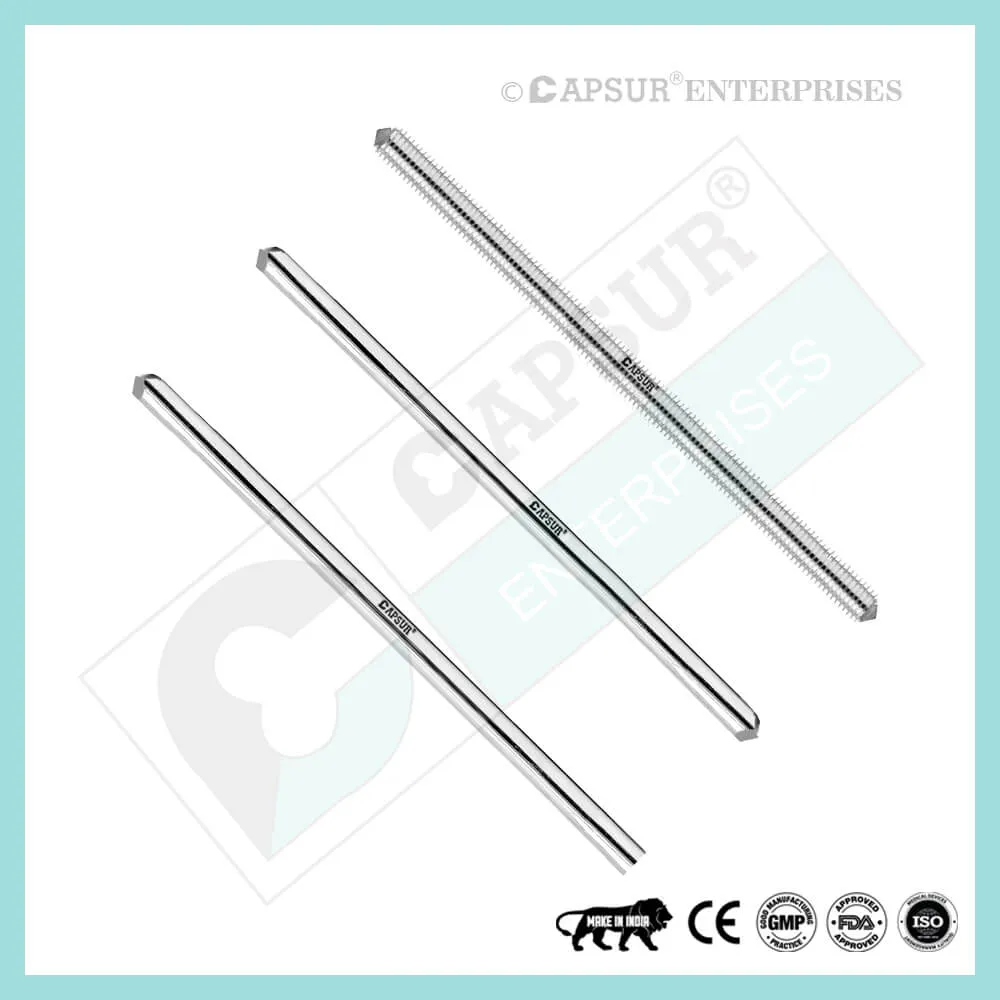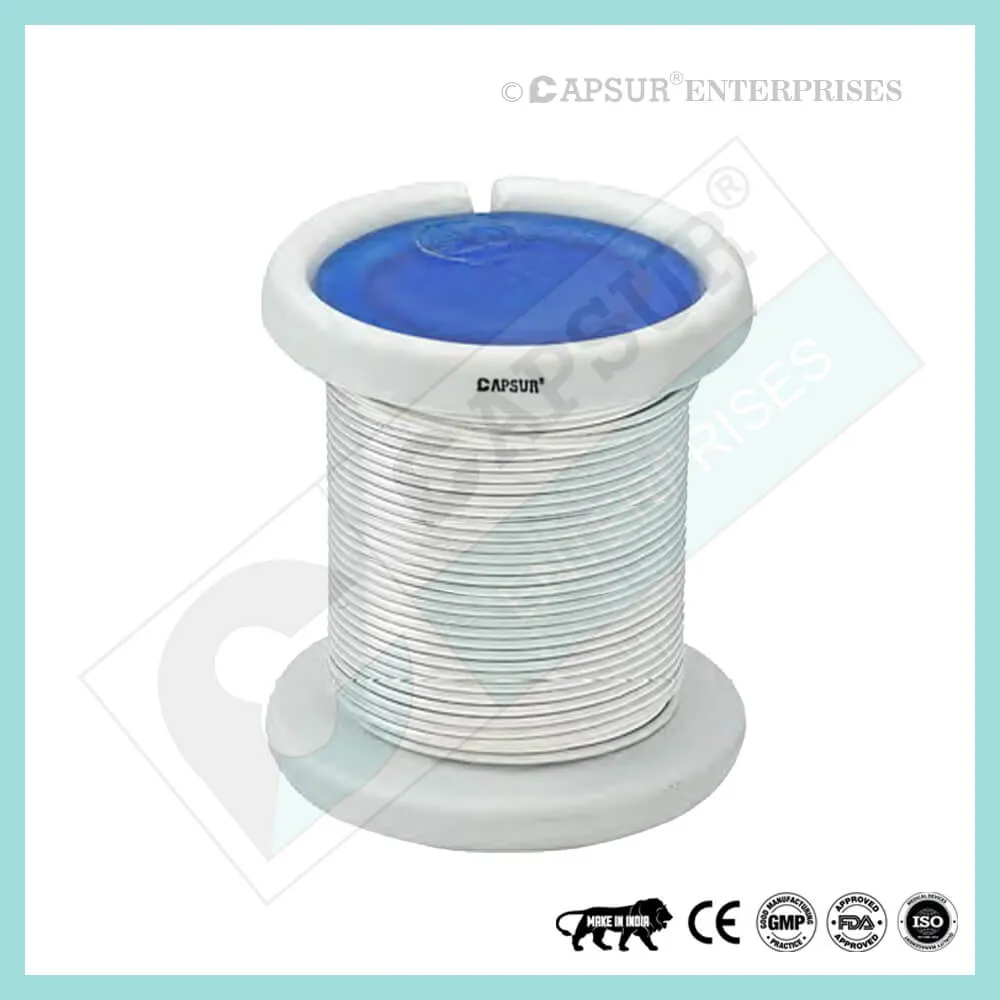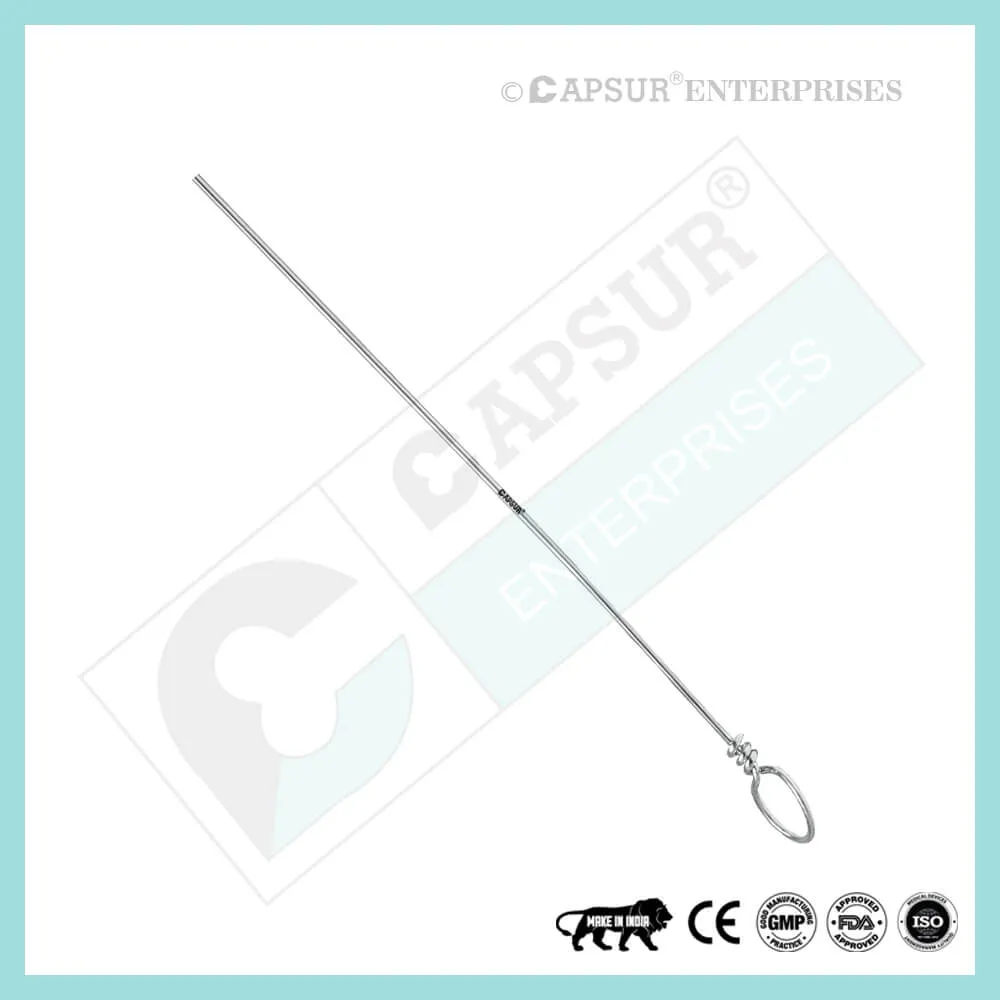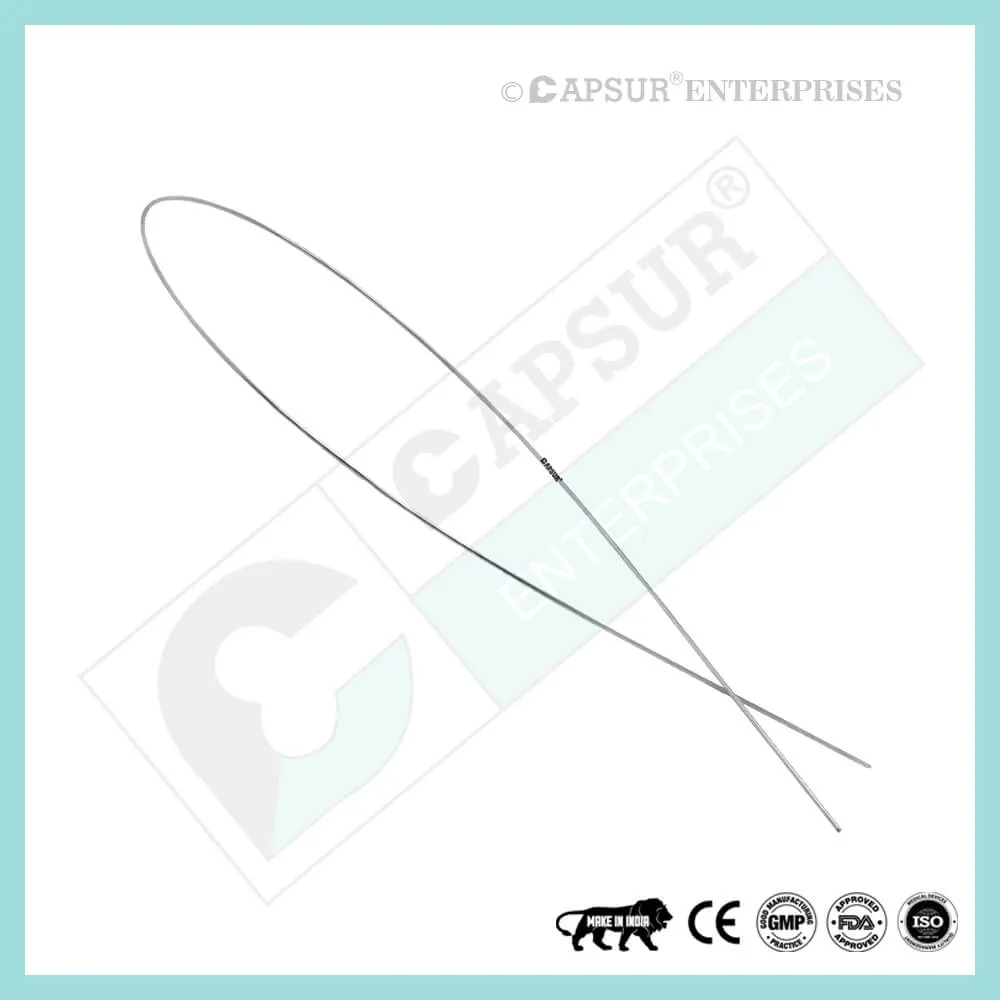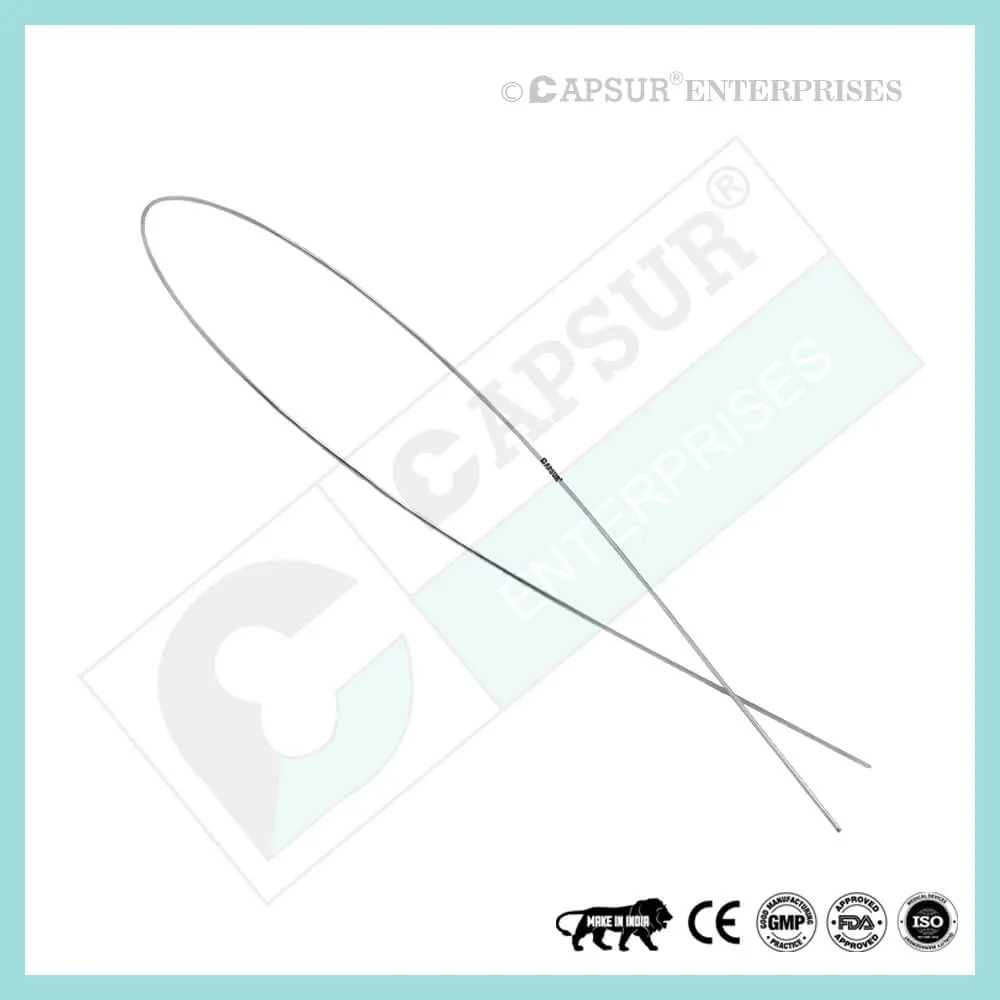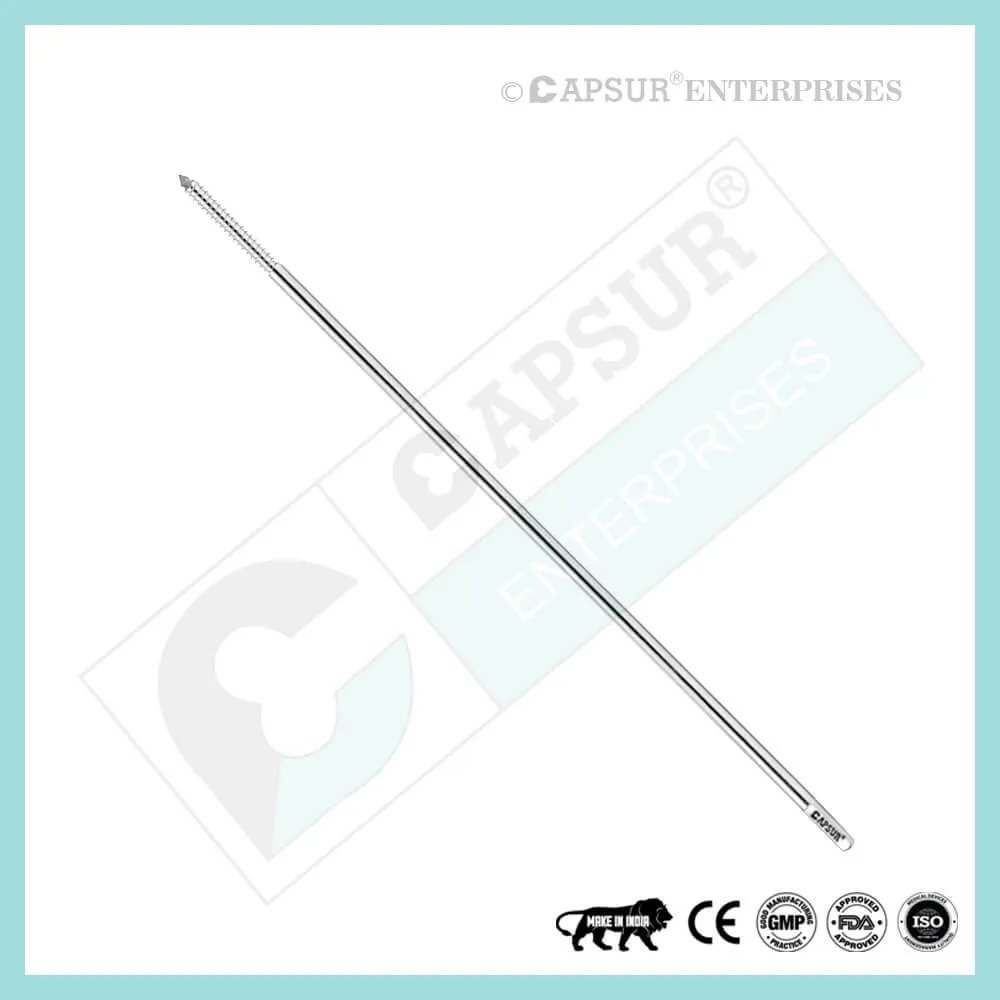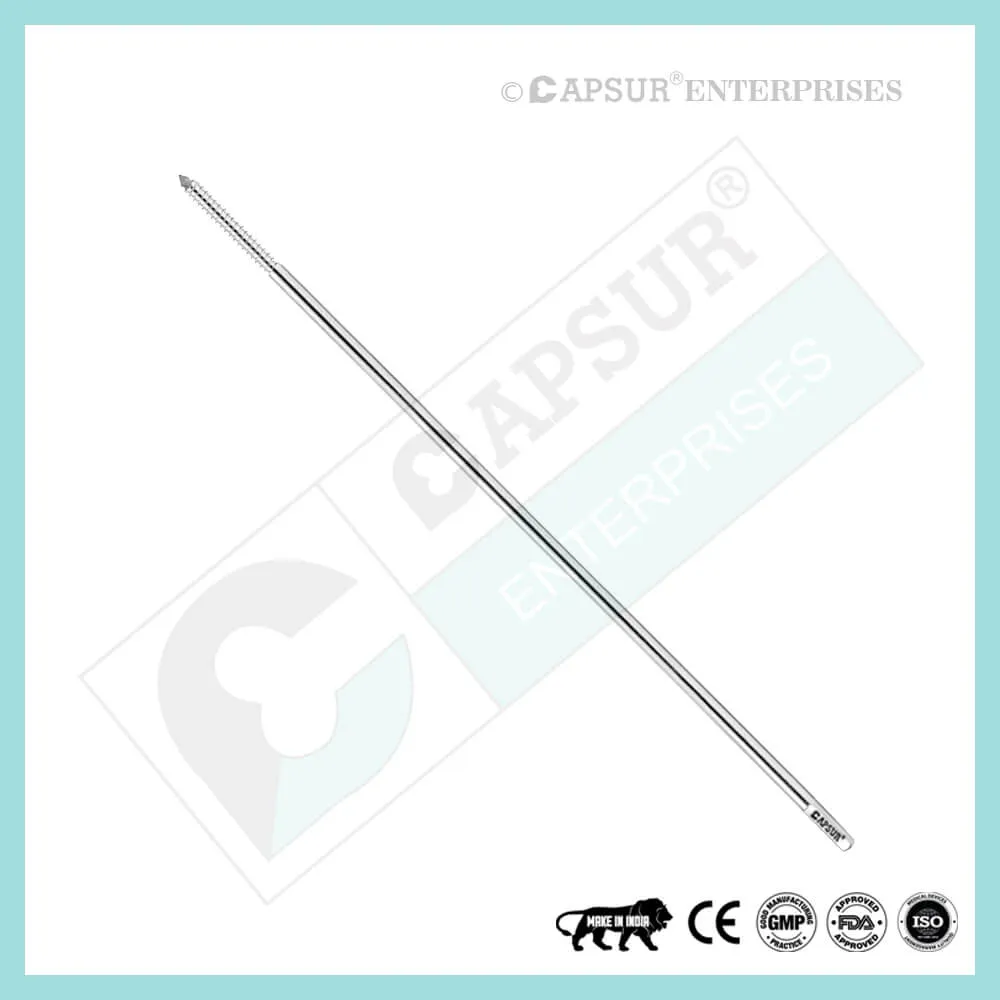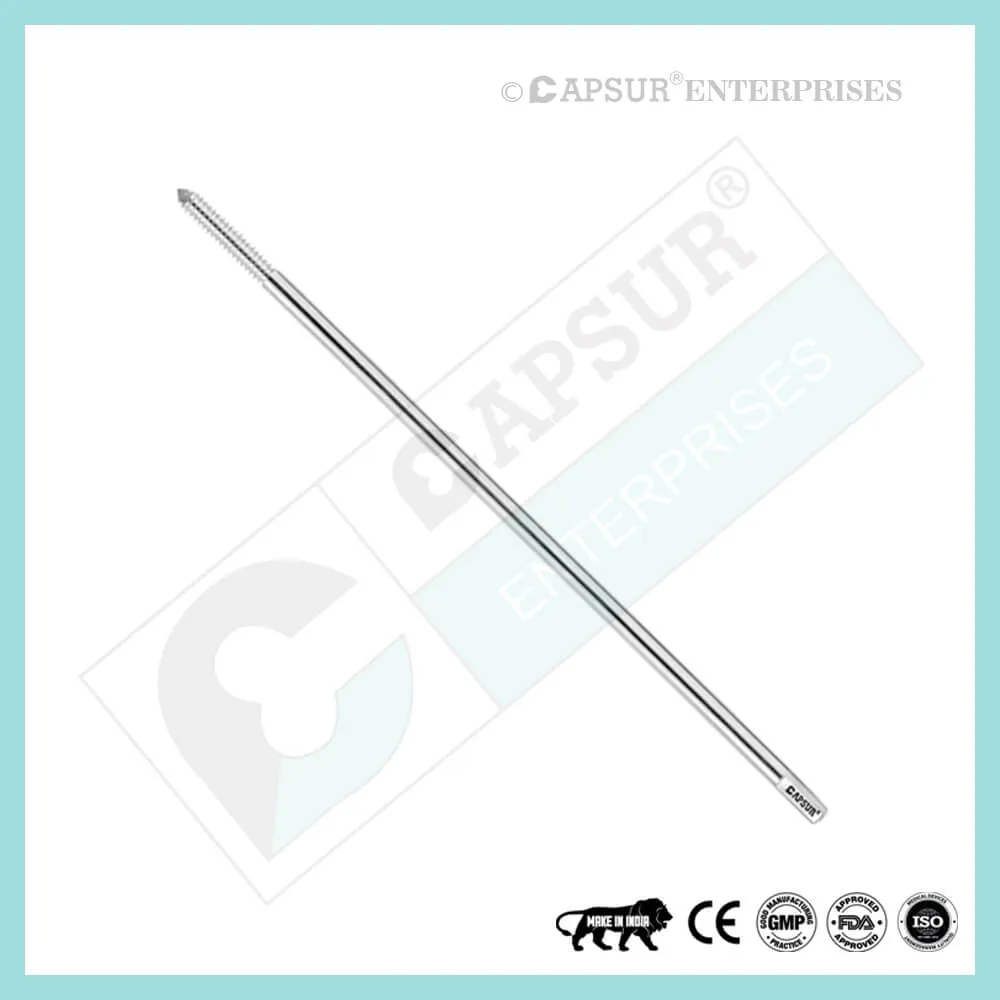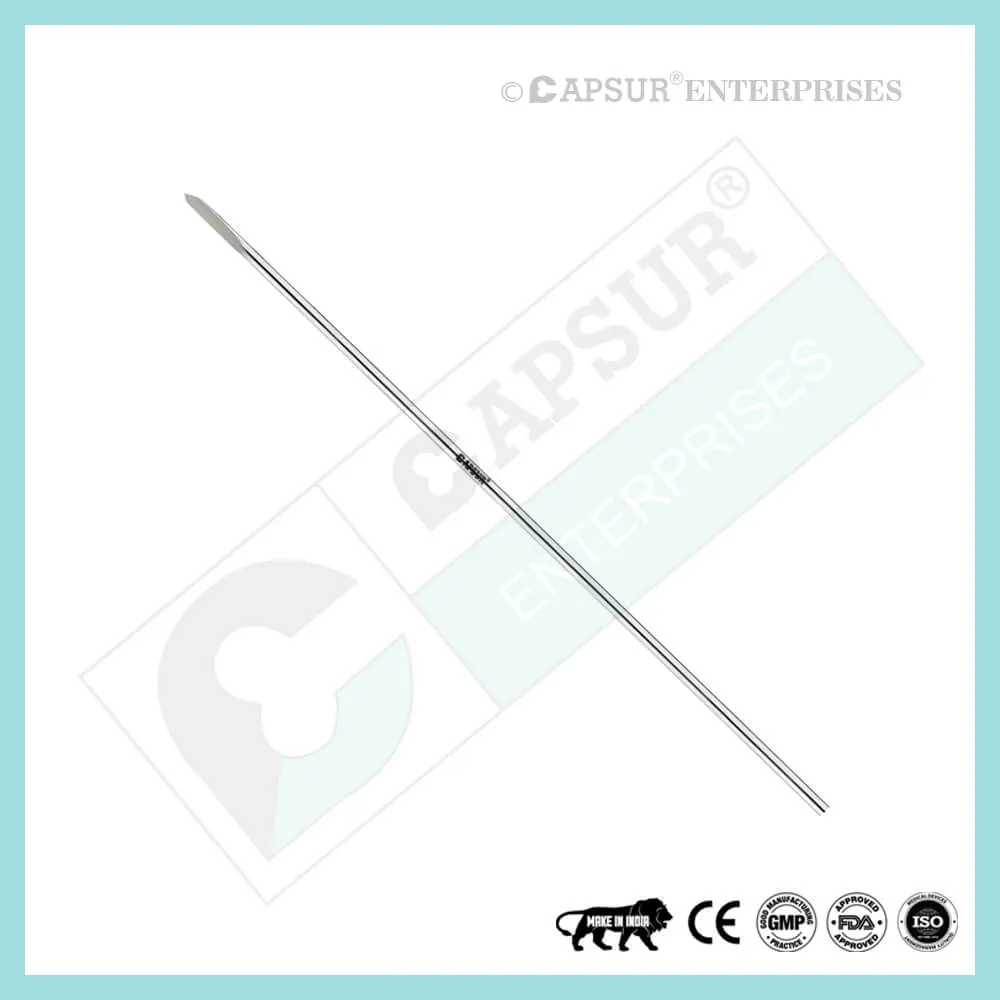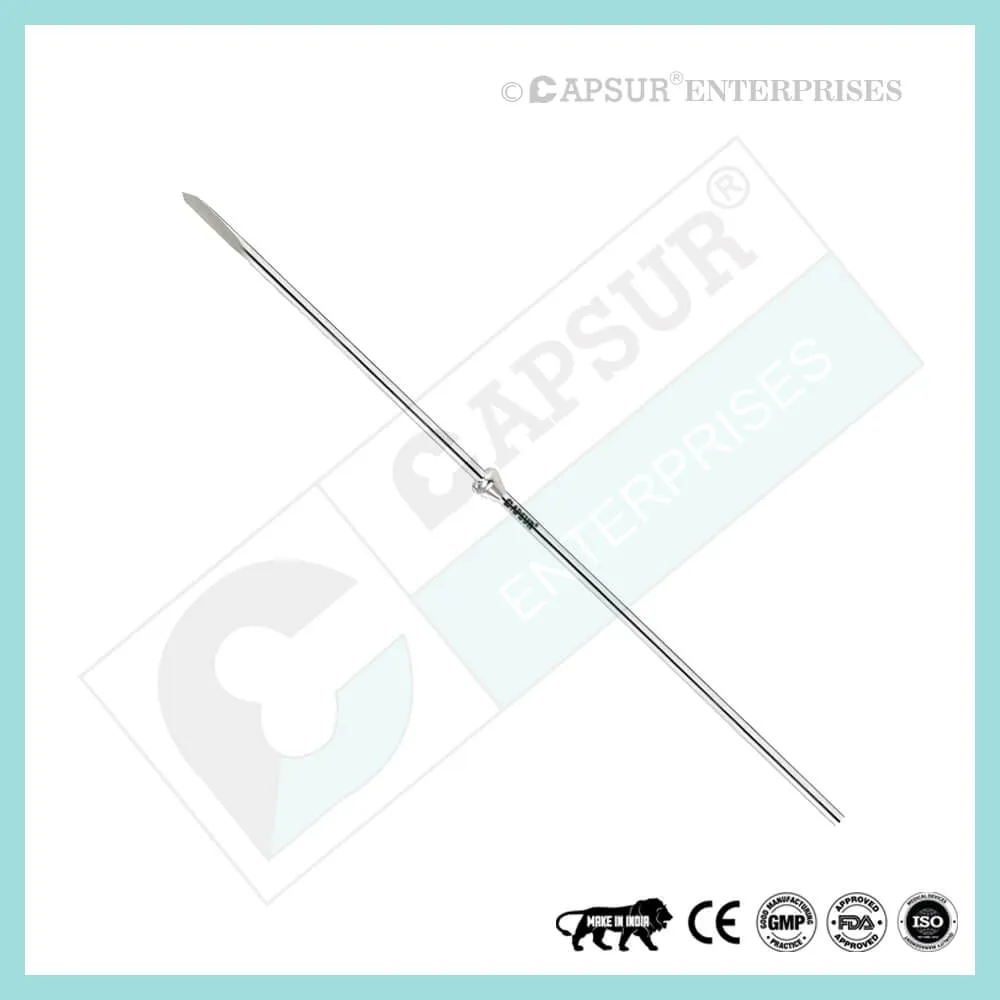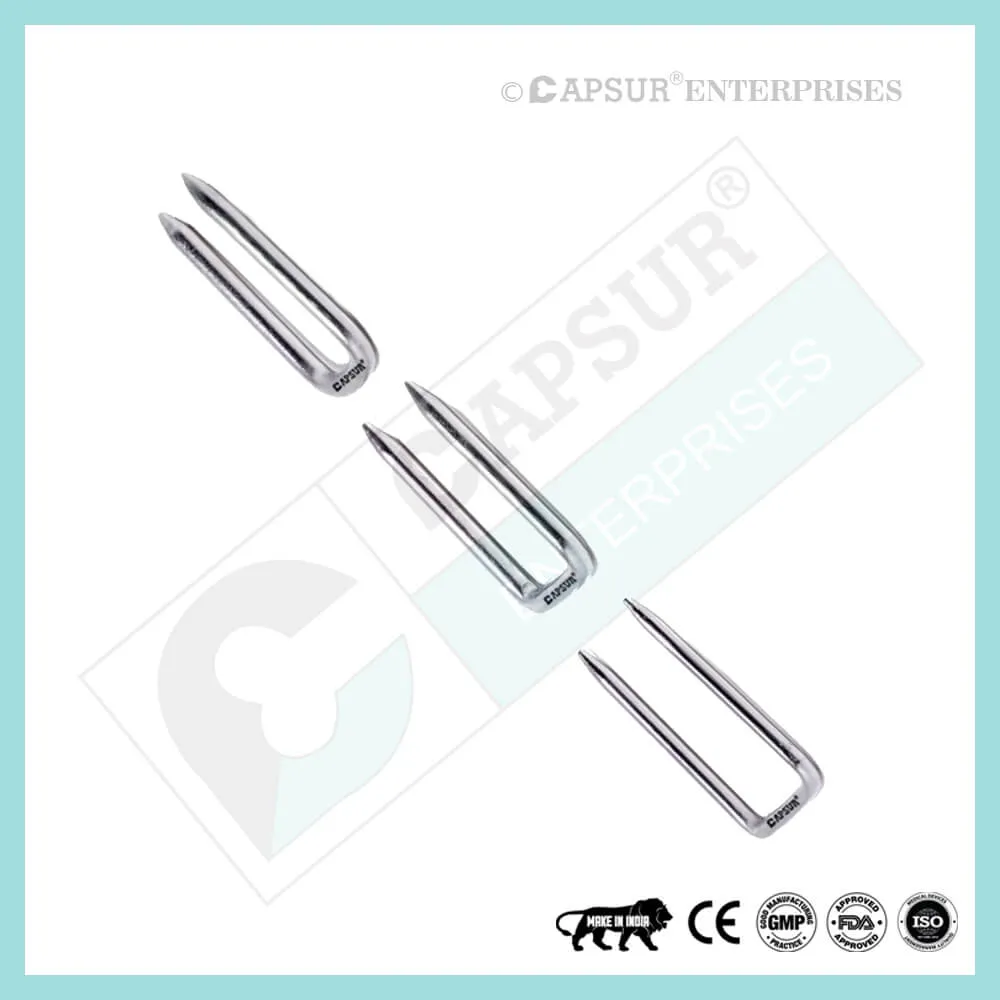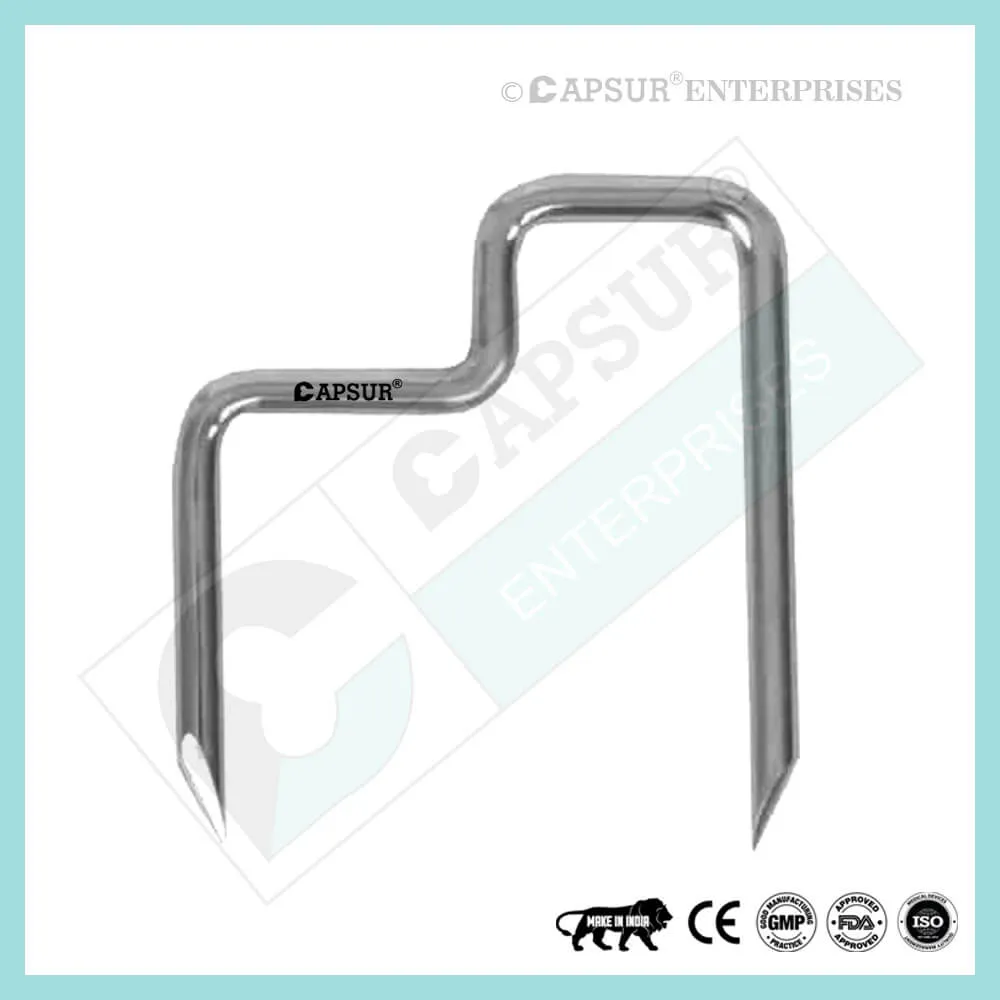Model No: 124433-A12
- Best Quality
- Affordable Pricing
- On-Time Delivery
- Customer Satisfaction
Specification of Gigli Saw Wire
A flexible wire saw called a Gigli Saw Wire is what surgeons use to cut bones. It is made up of numerous flexible wires that have been twisted to form various cutting surfaces. Both ends have loops so they can be fastened to handles. It is frequently employed in limb amputation.
Gigli Saw Wire is made to cut when the blade is powered in a rapid reciprocating movement (a back and forth motion similar to a jigsaw) against the object to be cut. The cutting teeth are arranged in a straight line along the cutting edge.
To ensure the highest quality, Vast Ortho Gigli Saw Wire is made from the best SS 316L material. The blade’s performance and quality are crucial for successful amputation.
Gigli Saw Wire comes in five different lengths.
- 30 cm
- 40 cm
- 50 cm
- 60 cm
- 70 cm
To ensure the highest quality, Vast Ortho Gigli Saw Wire is made from the best SS 316L material. The blade’s performance and quality are crucial for successful amputation.
Gigli Saw Wire comes in five different lengths.
Gigli Saw Wire Risk Factor
When assessing the prognosis in each case, contraindications—which may be partial or complete—must be taken into account. Under the following circumstances, alternative management strategies may need to be taken into account:
- infections that are systemic or local, acute or chronic.
- either localized, systemic, or chronic inflammation.
- serve as a dangerous vascular, nervous, or muscular disease.
- Bone defects that would prevent the implant from being properly anchored.
- All associated conditions that might jeopardize the implant’s performance and effectiveness
Other Important Info of Gigli Saw Wire
Warnings and Precautionary for Gigli Saw Wire
Before using Gigli Saw Wire, the surgeon and supporting personnel should read the safety instructions as well as any product-specific information in the product description, surgical techniques, and/or brochures.
Gigli Saw Wire is designed, built, and produced with the utmost care using materials of the highest quality. As long as they are used correctly, these high-quality Wires guarantee the best working outcomes. For that reason, it is necessary to abide by the usage guidelines and safety advice below.
Wire should only be used properly to avoid injury to the operator, patients, or other people, as well as tissue damage, premature wear, and instrument destruction.
In order to effectively manage their patients’ medical conditions, operating surgeons must actively participate. The surgeon needs to be completely aware of the limitations of the tools and the surgical procedure. The surgeon and the surgical team are accountable for taking care in the appropriate selection and use of surgical instruments. Before using implants, adequate surgical training should be acquired.
Factors that could harm the operation’s success include the following:
- implants-related allergies.
- bone tumors that are localized.
- Osteopenia or osteomalacia.
- disorders of metabolism and systemic illness.
- drug and alcohol addiction.
- Performing physical activities that subject the implant to a lot of shocks, blows, and/or loading.
- Patients who are not able to comprehend and follow instructions from the doctor due to mental impairment.
- ill general health.
- Consequences that could arise
- The most frequent negative outcomes from implantation are the ones listed below:
- Gigli Saw Wire loosening may be caused by the implant’s tissue reaction or by the fixation site being subjected to repeated loads.
- Acute and chronic infection.
- A second bone fracture that occurs as a result of unusual stress or weakened bone tissue.
- neural damage that is either temporary or permanent and is brought on by hematomas or pressure.
- delayed wound healing and wound hematomas.
- Venous disease, such as pulmonary embolism, cardiac arrest, and venal thrombosis.
- A heterotopic ossification.
- The Gigli Saw Wire’s presence causes pain and discomfort.
- The implant bending, loosening, or breaking due to mechanical failure.
- An injury is caused by implant migration.
Preoperative Planning for Gigli Saw Wire
Following a thorough clinical evaluation of the patient, the operation is planned. X-rays are also necessary to provide a clear picture of the bony anatomy and any associated deformities. A full size of Gigli Saw Wire must be on hand, along with the appropriate implantation tools, at the time of the procedure.
The potential risks and complications related to the use of implants should be discussed with the patient by the clinician. If the patient has allergies to any of the implant materials, it is crucial to know this before surgery. Additionally, the patient needs to be made aware that the device’s performance cannot be guaranteed because problems may reduce its lifespan.
Gigli Saw Wire Precautions
During reprocessing, verify that the instruments are functional and look for wear. Before using, replace any worn-out or broken instruments.
It is advised to use the tools designated for this Wire.
Use caution when handling equipment, and put used bone-cutting tools in a sharps container.
Always use suction and irrigation to remove any debris that may be produced during implantation or removal.
Gigli Saw Wire Warnings
Gigli Saw Wire is brittle and can break under extreme pressure while in use. We advise that the broken part be removed whenever possible and practical for the particular patient, though the surgeon will ultimately decide whether to do so based on the risk involved. Be aware that implants lack the natural bone’s strength. Significant loads may cause implants to fail.
The user’s glove or skin may be pinched or torn by the sharp edges or moving joints of some instruments, screws, and cut plates.
Be sure to get rid of any fragments that weren’t fixed during surgery.
While the surgeon will ultimately decide whether to remove the implant, we advise that fixation devices be taken out as soon as it is safe and practical for the specific patient and after their purpose as a healing aid has been fulfilled. To prevent refracture, Gigli Saw Wire removal should be followed by adequate post-operative
Gigli Saw Wire General Adverse Events
There are risks, side effects, and adverse events associated with all major surgical procedures. While there are many possible reactions, the following are some of the most frequent ones: issues related to anesthesia and patient positioning (such as nausea, vomiting, dental injuries, neurological impairments, etc.), thrombosis, embolism, infection, damage to nerve and/or tooth roots or other critical structures, such as blood vessels, excessive bleeding, damage to soft tissues, including swelling, abnormal scar formation, functional impairment of the musculoskeletal system, and pain.
| Gigli Saw Wire |
|---|


